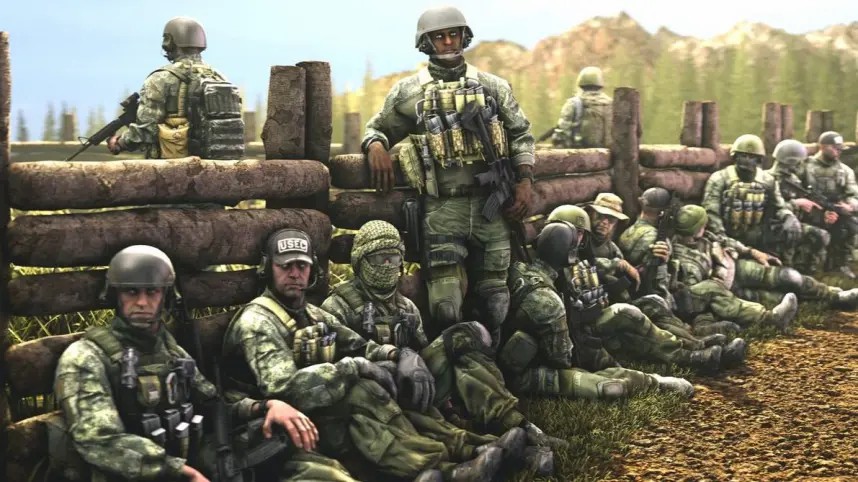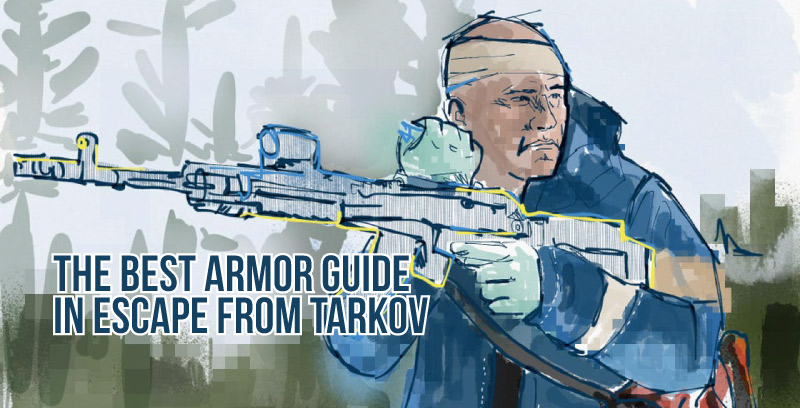Escape from Tarkov works a little differently than most first-person shooters. Unlike other FPS games where the weapon itself is the determining factor in the damage, the player can inflict, in Escape from Tarkov the ammunition that the weapon uses is the determining factor in the damage. The right ammo can easily pierce certain types of body armor, so equipping your soldier with the right armor is critical to the survival and preservation of your items. Like everything else in this game, body armor is not as simple as in other FPS games where the player is simply looking for the best-rated armor.
The cost
One of the most important factors to consider when choosing an armor is cost. This is especially true for novice players. One wrong move or wrong turn can be disastrous for the player; when you are killed, you lose everything you were wearing. For this reason alone, it is unwise for a beginner player to spend a lot of Tarkov money on armor or wear their best armor in battle, which has an unfavorable chance of survival. In the beginning, only wear the armor that you don’t mind losing – because it probably will. Save more expensive armor when you have better weapons and more experience.
Inventory
Several forms of body armor should be considered. Escape from Tarkov features torso vests as well as body armor. They are equipped through different slots in your inventory. Drilling rigs are good for several reasons. First, many rigs provide better protection than vests. Secondly, rigging rigs is not easy. The cumbersome process of rigging the rig makes it less likely that the enemy will steal your dead body because they will be inclined towards it for a while. Finally, the rig allows the player to carry more spare magazines with them.
Armor Levels
In Escape from Tarkov, armor is given a numerical value between two and six. The higher the number, the stronger the armor will be; however, a higher number (usually) also means the armor will be bulkier and make your mobility more difficult. Tier 3 armor offers a good mix of protection and mobility. As with most equipment in this game, it all comes down to the price-risk ratio. New players will want to spend whatever they have to get the best armor they can afford in order to have a better chance of survival. Just remember that heavier armor is not a guarantee of survival, and when you get killed, that expensive armor will probably disappear.
Repairs
One mistake new players can make is spending too much on armor, just to not have enough resources to repair the armor after the match. Another thing to remember about repairs is that this is a practice of abrasion. Players pay to restore the lost durability of a piece of armor, but this reduces its maximum durability. When repaired, different materials also lose more maximum strength than others; Also, some materials are cheaper to repair than others. Ceramic slabs, for example, lose strength very quickly and cannot be repaired. Keep these factors in mind when purchasing new armor.
Armor Attributes
The armor and helmets in Escape from Tarkov have various attributes that players should be familiar with. Armor points are a measure of the strength of armor, or how much damage an armor can take before it no longer protects the wearer. The armor class, numbered from two to six, reflects the degree of resistance of the armor to penetration. Then there are negative attributes; for example, how much slower a person will move and turn, and how much the armor reduces the wearer’s ergonomic score. One attribute with no numerical value is the material the armor is made of.
Areas of coverage
Not all armor protects the same body parts in Escape from Tarkov. The armor can protect three body parts. Most often, it is necessary to protect the chest. All body armor and equipment protect the chest; these are the front and back of the torso, but not the sides. Some armor wraps around the torso, protecting the belly as well. Some vests and rigs also provide some protection for the player’s hands. Finally, helmets do not necessarily cover the entire head; all helmets have areas that leave the user’s head unprotected.

Materials (edit)
There are many different materials in Escape from Tarkov that can be used to make armor. Each of these materials provides specific benefits for armor, but all of these materials also suffer from various penalties. Ceramic cladding is great for stopping more powerful ammunition; however, as mentioned above, ceramic armor is also not repairable. Steel and polymer are the easiest to repair; followed by aluminum, titanium, and aramid armor. The worst materials from the point of view of repair are combined, ceramics, glass. The softer material is less likely to stop high-power ammunition but will offer more mobility and fewer ergonomics.
Weighting
Many beginner players will want to get their hands on heavy metal (at some point), thinking that it will turn their soldier into a tank, and so it will be for a while (provided you stay alive). Be careful how much your armor drops your ergonomic rating. A lower ergonomic rating means less aiming time. This means that when faced with a lighter armored enemy, he will probably shoot before you, which somewhat negates the advantage of stronger armor. This is especially true given that some types of ammo can penetrate even the toughest armor, and helmets have unprotected areas.
Recommendations
You should be more familiar with how armor works in Escape from Tarkov, and you should be able to make a more informed decision when choosing your armor. Here are some guidelines just in case. Novice players should definitely refrain from buying more expensive pieces of armor and just hope they can collect them on the battlefield. A good armor for newbies is 6B2 Armor. This is just Tier 2 armor, but it has great durability, covers the chest and abdomen, is not too expensive to repair, and does not greatly interfere with mobility. Players with resources will probably want to try out FORT’s ceramic plate armor; this level of protection will slightly increase survivability.
